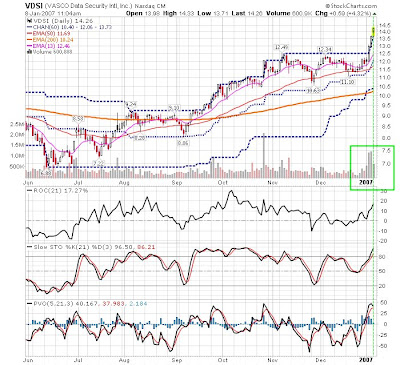Alan talks about
trend range axis. Also, I think Alan has some good things to say but his language is very difficult to understand sometimes. He tries to make ideas sound more difficult than need be. Once you get used to the way he expresses himself, the information he provides is good.
Stocks are either trending or trading within a range. Alan refers to this as positive (trending) or negative feedback (range bound).
Basically, you have these cycles where there are periods of quiet low volume trading where price absorbs
volatility. Once that has happened, another leg of activity erupts.
Alan says, when breakouts erupt, follow the instincts of the momentum player. Buy high and sell higher.
However, when volume drops and price bars narrow, use price
boundaries (ranges) to fade the short-term direction.











